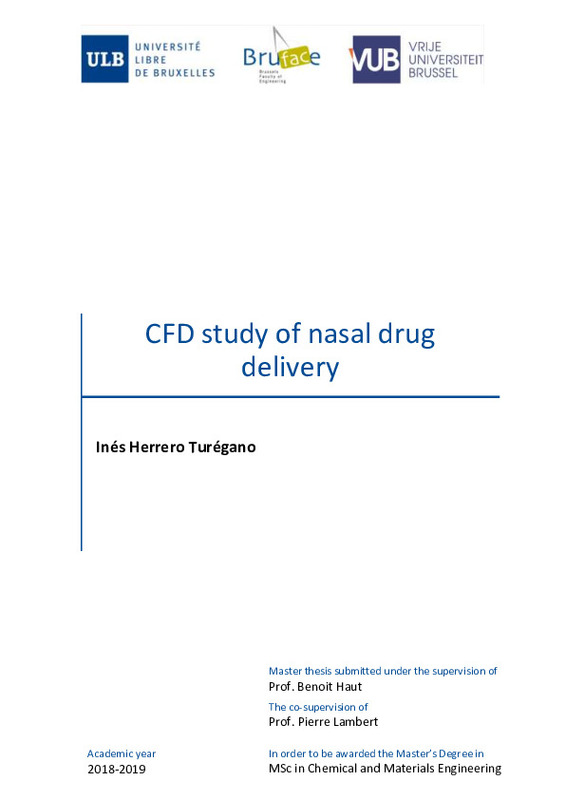JavaScript is disabled for your browser. Some features of this site may not work without it.
Buscar en RiuNet
Listar
Mi cuenta
Estadísticas
Ayuda RiuNet
Admin. UPV
Estudio CFD de la entrega de medicamentos por vía nasal
Mostrar el registro completo del ítem
Herrero Turégano, I. (2019). Estudio CFD de la entrega de medicamentos por vía nasal. http://hdl.handle.net/10251/145698
Por favor, use este identificador para citar o enlazar este ítem: http://hdl.handle.net/10251/145698
Ficheros en el ítem
Metadatos del ítem
| Título: | Estudio CFD de la entrega de medicamentos por vía nasal | |||
| Autor: | Herrero Turégano, Inés | |||
| Director(es): | ||||
| Entidad UPV: |
|
|||
| Fecha acto/lectura: |
|
|||
| Resumen: |
[EN] In the last decades, the increasing number of neurodegenerative diseases have alerted the
scientific community. The diagnosis of Alzheimer disease is supposed to double the number
every 20 years, reaching the 131,5 ...[+]
[ES] El suministro intranasal de medicamentos ha atraído una atención significativa debido a la oportunidad de administrar medicamentos sistémicos directamente al torrente sanguíneo. El siguiente proyecto se compromete a ...[+]
|
|||
| Palabras clave: |
|
|||
| Derechos de uso: | Reserva de todos los derechos | |||
| Editorial: |
|
|||
| Titulación: |
|
|||
| Tipo: |
|
recommendations
Este ítem aparece en la(s) siguiente(s) colección(ones)
-
ETSII - Trabajos académicos [10404]
Escuela Técnica Superior de Ingenieros Industriales








